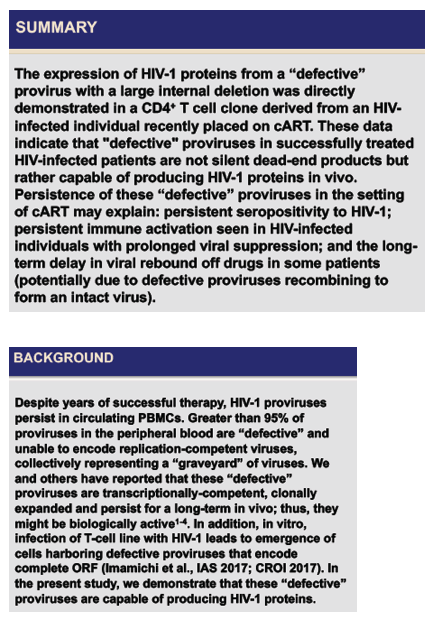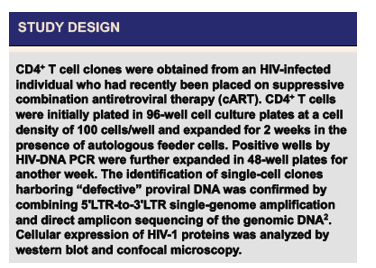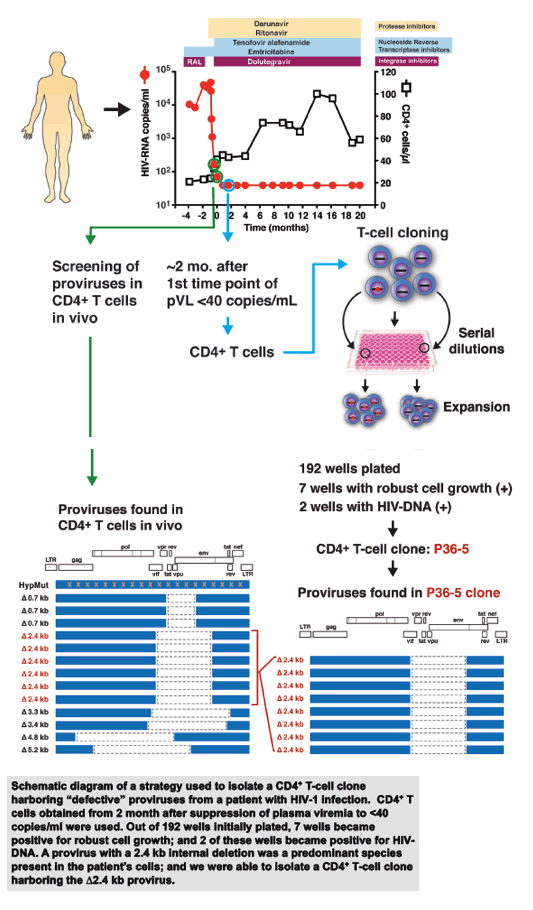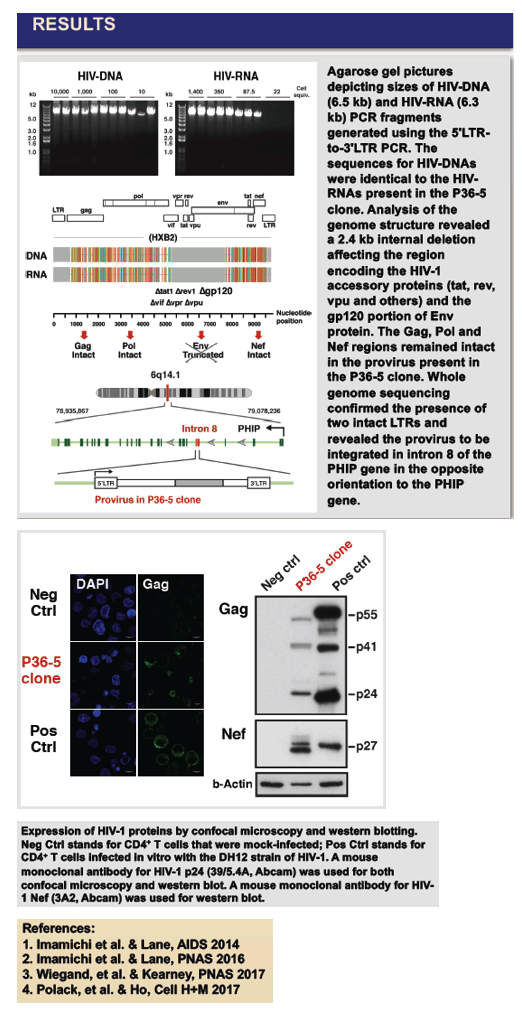 |
 |
 |
| |
Evidence of production of HIV-1 proteins from "defective"
HIV-1 proviruses in vivo: Implication for persistent
immune activation and HIV-1 pathogenesis
|
| |
| |
Reported by Jules Levin
9th IAS Conference on HIV Science (IAS 2017), July 23-26, 2017, Paris
Hiromi Imamichi1, Mindy Smith1, Alice Pau1,
Catherine A. Rehm1, Marta Catalfamo2 and H. Clifford Lane1
1National Institute of Allergy and Infectious Diseases, NIH, Bethesda, MD, USA
2Georgetown University School of Medicine, Washington, D.C., USA

abstract
Background: Greater than 95% of proviruses detected in circulating PBMCs are referred to as "defective" and are unable to encode intact viruses. They have been thought to represent a silent graveyard of viruses with little contribution to HIV-1 pathogenesis. We have recently shown that these "defective" proviruses are capable of transcribing novel mRNA species. In the present study, we demonstrate that these "defective" proviruses are also capable of producing HIV-1 proteins.
Methods: CD4+ T cell clones were obtained from an HIV-infected individual who had recently been placed on suppressive combination antiretroviral therapy (cART). The CD4+ T cells were initially plated in 96-well cell culture plates at a cell density of 100 cells/well and expanded for 2 weeks in the presence of autologous feeder cells. Positive wells by HIV-DNA PCR were further expanded in 48-well plates for another week. The identification of single-cell clones harboring "defective" proviral DNA was confirmed by combining 5'LTR-to-3'LTR single-genome amplification and direct amplicon sequencing of the genomic DNA. Cellular expression of HIV-1 proteins was analyzed by western blot and flow cytometry.
Results: Two months after suppression of plasma viremia to < 40 copies/ml, the estimated frequency of CD4+ T cells containing HIV-DNA was 1%. Multiple cell lines harboring defective proviruses ranging from 6.5-8.2 kb in length were derived from the CD4+ T cells. Most prominent among these were cells containing an identical 6.5 kb provirus. Sequencing of this 6.5 kb provirus revealed a 2.4 kb internal deletion affecting the region encoding the HIV-1 accessary proteins and the gp120 portion of Env protein. The Gag, Pol and Nef regions remained intact in the 6.5 kb provirus. Consistent with the DNA data, western blots revealed the presence of the Gag and Nef proteins.
Conclusions: These data indicate that "defective" proviruses in successfully treated HIV-infected patients are not silent dead-end products but rather capable of producing HIV-1 proteins in vivo. The proteins encoded by these defective "zombie" proviruses may be responsible for persistent seropositivity and immune activation in most patients with controlled HIV-1 infection during suppressive cART.



|
| |
|
 |
 |
|
|